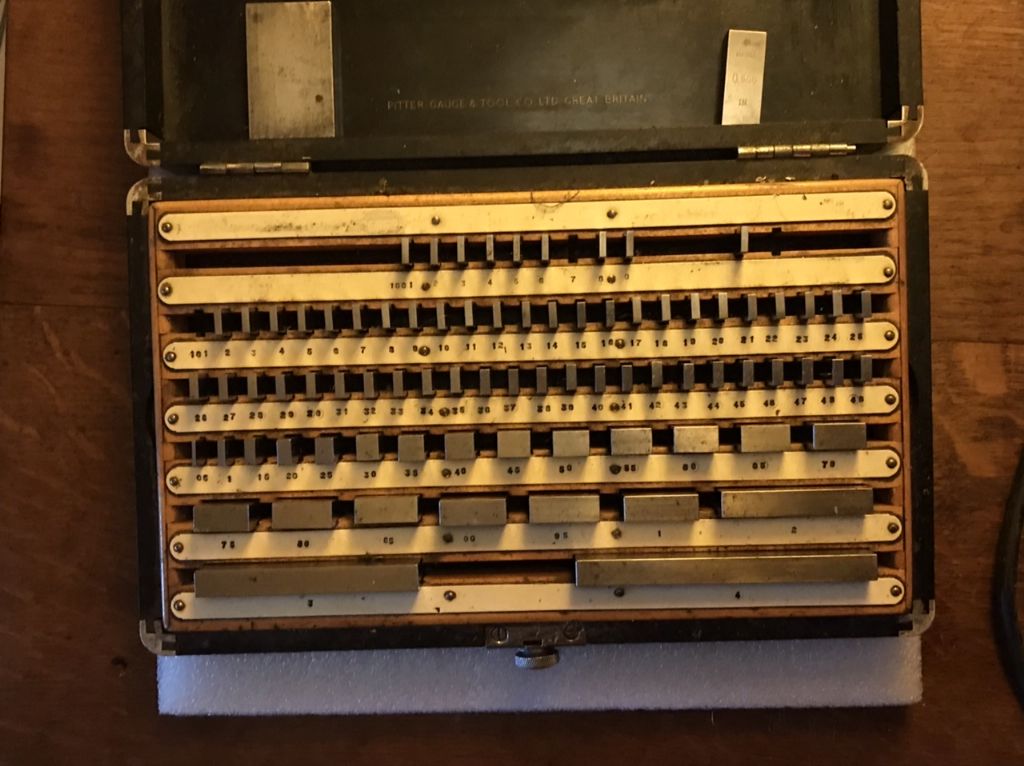Posted by not done it yet on 07/11/2019 16:40:32:
…
Doubt if that precision will make much difference to my machining …
…
If I was the proud owner of a gauge block set, I wouldn't be using it to chase tenths! But it would be useful to own one, even one in slightly suspect condition.
At the moment my most trustworthy dimensional standard is a £25 micrometer. It's cheap certificate claims ±0.01mm accuracy and – although it performs – I've no way of checking it. My ground parallel set says its parts are ±0.02mm, not good enough for calibration purposes, or even to prove definitively that my micrometer 'feel' is correct or not. So I can only realistically say dimensions are about right to about a thou, more or less, at best. And for all I know there are dimensions my measuring instruments get moderately wrong. The Duffer Workshop could certainly do better!
As Old Mart remarked a thou is 'good enough' for most home workshop purposes. Where gauge blocks would be most useful to me is for periodically checking my digital calipers and micrometer. In particular confirming they are accurate across their full range. Bet they aren't, and it would be good to know if any gross scale errors are worth correcting.
Gauge blocks would also be useful if someone asked me to make a large number of toleranced objects. Say I was asked to turn 500 off 0.498" diameter pins where the maximum tolerance was zero and the minimum was 0.497" Rather than checking each and every pin on the lathe with a micrometer, instead I would use gauge blocks to make accurate 'go-no go' gauges. These would let me turn quickly down to 'go' and to equally quickly reject any pins where I took slightly too much off. The need is to make a trustworthy measurement tool requiring considerably better accuracy than my normal dubious workshop standard. The Go and No Go gauges wouldn't be knocked off in ten minutes. Likely they would take me considerable time and effort to get right, and a set of gauge blocks are the easiest way of getting there with certainty. The price of mismeasuring is the customer rejecting 500 out of spec pins.
Of course my workshop almost always does metalwork to suit my less demanding purpsoes. In it I slowly make small numbers of parts and fettle them to fit together. High levels of accuracy aren't needed. In that space gauge blocks are far less useful. Most of the time digital calipers are good enough or even dividers. The 'gauge' is the feel of the fit between two parts, one of which is trimmed to fit the other and possibly not measured at all.
Horses for courses again.
Dave
Paul Barter.





